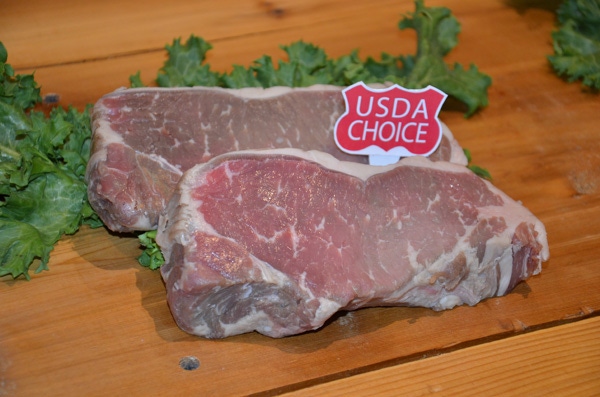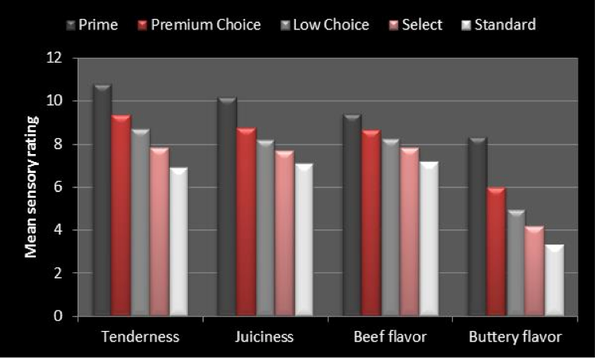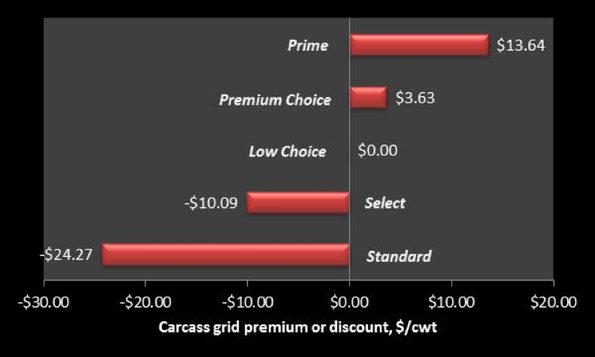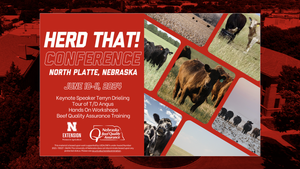Consumers are clear—beef quality matters
Beef’s taste is the most important quality for consumers.

”Consistently providing consumers with a pleasurable eating experience at a compelling price.” That, according to Daryl Tatum, professor of meat safety and quality at Colorado State University, is the core of beef’s value proposition.
And what is the most important part of that value proposition? For consumers, it just has to taste good.
For beef producers, however, that value proposition is a little more complicated. In a white paper analysis of how the beef industry can meet the expectations of today’s beef consumer, Tatum notes that consumers now are quality driven rather than price driven, as has been the case in years past. That means, he says, that consumers are willing to pay more for beef as long as the eating experience justifies the price.
Achieving that goal means the beef industry must not just continue but increase its focus on the quality attributes that separate beef from its white meat competitors.
The problem, Tatum says, is that those quality attributes—taste being chief among them—are experience attributes, meaning consumers (and beef producers as well) can’t assess a beef product’s performance and value until they have tasted it. If consumers buy it and like it, they’ll most likely buy it again. If the product doesn’t perform … well, as the old saying goes, you never get a second chance to make a good first impression.

BEEF Seedstock 100 List
Looking for a new seedstock provider? Use our UPDATED Seedstock 100 listing to find the largest bull sellers in the U.S. Browse the list here.
Beef producers can up the odds of not only making a good first impression, but consistently delivering the taste and other quality attributes that consumers want, by focusing on producing cattle that hit the upper two thirds of Choice and even slip into Prime, according to Tatum’s analysis.
Quality grade matters
Tatum looked at five different studies that assessed the effect of quality grade on consumer acceptability. “Results of this five-study analysis show that each successive increase in quality grade was associated with a higher probability of a positive eating experience and reduced odds of a negative eating experience,” Tatum says.

Taste, to consumers, is a combination of flavor, tenderness and juiciness. “Prime steaks were most likely to meet consumers’ expectations for flavor, tenderness and juiciness, with only 1 in 33.6, or 3% of strip loin steaks from Prime carcasses, providing a negative eating experience.” Moreover, within the Choice grade, Premium Choice steaks (upper two thirds Choice) offered a distinct advantage in sensory performance over Low Choice steaks—93% of the Premium Choice steaks were acceptable, while 83% of the Low Choice steaks provided a positive eating experience.
Looking at the same comparison from a different perspective, Tatum says the Premium Choice versus Low Choice comparison indicates that the odds of a satisfactory overall eating experience are 2.9 times greater if a consumer chooses the Premium Choice steak.
In that same comparison, the odds of satisfactory flavor, tenderness and juiciness were 3.4, 1.6 and 1.7 times greater respectively for those three quality attributes for Premium Choice versus Low Choice steaks, implying that flavor is the primary sensory attribute that differentiates Premium Choice steaks from Low Choice steaks. “In all but one comparison, opting for steaks of a higher quality grade significantly improved the odds of a satisfactory sensory experience,” he says.

While that’s very important knowledge for beef producers, consumers aren’t likely to become students of meat science. They just want a good steak. As retail beef prices have escalated the past few years, some consumers have become more discriminating with respect to quality and value and have demonstrated a willingness to trade up, paying premium prices to obtain the kinds of beef products and eating experiences they desire, Tatum says. These consumers do that by passing by the commodity section of the beef case and picking up branded products instead.

70+ photos showcasing all types of cattle nutrition
Readers share their favorite photos of cattle grazing or steers bellied up to the feedbunk. See reader favorite nutrition photos here.
Based on USDA beef market statistics, Tatum says about a third of Choice boxed beef was marketed under a brand designation in 2014, the most recent data available when Tatum did his analysis. More significantly, Tatum says nearly all the Premium Choice beef is now sold under a brand name. In fact, research shows that a simple knowledge of brand identity enhances consumers’ perception of beef quality by 10% to 12%, Tatum says.
“For example, from 2009 through 2014, growth in consumer demand for premium quality Certified Angus Beef increased 112 percentage points, whereas demand for commodity Choice beef declined by 2 percentage points,” Tatum says. “Within the same time period, branded Choice boxed beef sales, expressed as a percentage of total boxed beef sales, increased dramatically.”
As that value signal has been passed down the beef marketing chain, beef producers have seen premiums for higher quality cattle and beef increase as well. Looking at average beef carcass grid premiums and discounts from 2012 to 2014, Tatum calculates that Prime earned a $13.64 per cwt premium over Low Choice and Premium Choice earned a $3.63 per cwt premium. Meanwhile, Select was dinged with a $10.09 discount.
A brand is a promise, and consumers are increasingly relying on that promise as they stand at the meat counter. “From 2009 through the first three quarters of 2015, the average Choice beef retail price increased 49%,” Tatum says. “Recent demand trends suggest that many quality-conscious beef consumers are unwilling to pay today’s prices for the level of performance provided by commodity beef and instead have opted to trade up, purchasing premium beef products, thereby improving their odds of receiving a level of performance commensurate with the higher prices they are required to pay.”
See Tatum's full report on beef quality here.
You might also like:
10 most viewed photo galleries at BEEF
2016 BEEF Seedstock 100 now online
2016 market outlook: Here's what to expect
Why we need to let Mother Nature select replacement heifers
Want a more efficient cowherd? Start with early-born heifers
About the Author(s)
You May Also Like


.png?width=300&auto=webp&quality=80&disable=upscale)
